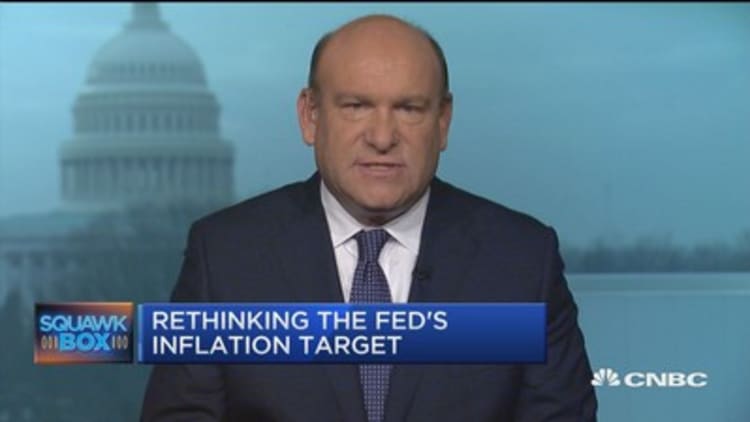
Financial markets are beginning to price in a more aggressive Federal Reserve this year.
After the government reported Friday morning strong retail sales from the holiday season and higher-than-expected core inflation, Fed rate hike probabilities shot up and moved into earlier months.
Markets now fully expect two rate hikes this year and have nearly priced in a third. And there is some initial flirtation with a fourth rate hike.
The probability of a rate hike in March surged to 84 percent from 78 percent a week ago, according to Thomson Reuters. More significantly, the second rate hike is now priced with a 55 percent chance to take place in June. Previously, it had been priced in for August, and for September not long before that.
Markets put a 45 percent probability on the third rate for December, up from 38 percent a week ago. There's even a 13 percent chance of a fourth rate hike being priced in.
The moves came after government data showed retail sales grew an expected 0.4 percent in December but November was revised up a tenth to 0.9 percent. It was the best combined gain for the critical retail months of November and December in seven years. Core retail sales, which feed directly into economists' GDP calculations, were revised up by four tenths to 1.4 percent in November, the best monthly gain since 2006, suggesting that fourth-quarter growth estimates will be revised higher.
"Net, net, the economy is strengthening at the end of the year and generating more inflation pressures even before consumers see what is in their paychecks after the tax cuts within the next few weeks,'' wrote economist Chris Rupkey of MUFG Union Bank.
Headline inflation, meanwhile, was quiet, but core inflation beat expectations by a tenth with a 0.3 percent rise. "The 'transitory' softness in the core is over,'' wrote Ian Shepherdson, chief economist at Pantheon Macroeconomics.
Higher market expectations for rate hikes will put immediate pressure on new Fed Chairman Jerome Powell, who is expected to be confirmed this month by the Senate to succeed outgoing Chair Janet Yellen. Powell will chair his first meeting in March, when markets now fully expect a hike.
He has generally supported the existing outlook by the Fed for three rate hikes but if the stimulus from tax cuts boosts both growth and inflation, Powell could soon face a question of whether he needs to do more or do it faster.
Dallas Fed President Robert Kaplan told CNBC that he believes the unemployment rate could fall below 4 percent. Kaplan said he had increased his growth forecast for this year to 2.5 to 2.75 percent.
"My base case is still that we should increase rates three times this year," he said. "It's possible it could be more than three times but that's still the base case. And I have more conviction that we're going to get down into the 3s in terms of headline unemployment. We're going to overshoot full employment and have a tighter job market than even we would've had."
Correction: This article has been updated to reflect that tax cuts could boost both growth and inflation.


